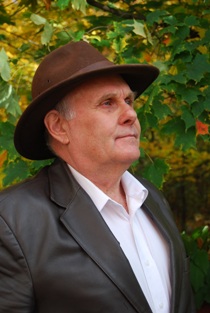Green Tomato: Biodiesel Is a Natural Solution at the CIA at Greystone
 Produced for only $0.88 a gallon to operate the college’s vehicles, the savings from converting cooking oil to fuel rather than purchasing regular diesel is huge.
Produced for only $0.88 a gallon to operate the college’s vehicles, the savings from converting cooking oil to fuel rather than purchasing regular diesel is huge.
The delicious smell of hot, freshly made doughnuts and French fries is wafting through the air at The Culinary Institute of America at Greystone in Napa Valley, and it has nothing to do with the creations from the college’s culinary students. It’s the smell of cooking oil turned into biodiesel fuel being used in campus vehicles.
The biodiesel fuel is created on campus from used cooking oil gathered from the fryers in the college’s teaching kitchen and Wine Spectator Greystone Restaurant. About 50 gallons of cooking oil is transformed into 45 gallons of fuel by putting the oil into the CIA’s biodiesel distiller. This machine removes the fatty acids from the oil and cleans out impurities. The oil is then heated to a high temperature to remove any remaining water in the mixture.

 The Culinary Institute of America (CIA) is launching a new major in Culinary Science beginning in February 2013—one of a series of new academic programs in bachelor’s-degree studies at the college. The programs will advance the culinary profession and position CIA graduates for career success in the dynamically evolving foodservice industry.
The Culinary Institute of America (CIA) is launching a new major in Culinary Science beginning in February 2013—one of a series of new academic programs in bachelor’s-degree studies at the college. The programs will advance the culinary profession and position CIA graduates for career success in the dynamically evolving foodservice industry. Chef Jacquy Pfeiffer, cofounder of The French Pastry School of Kennedy-King College at City Colleges of Chicago, has been named many things in his exceptional career in pastry: Pastry Chef of the Year at the 2004 World Pastry Forum; Celebrity Pastry Chef of the Year at the 2005 Jean Banchet Awards; and a Kings of Pastry in the 2009 documentary, “Kings of Pastry,” to name a few.
Chef Jacquy Pfeiffer, cofounder of The French Pastry School of Kennedy-King College at City Colleges of Chicago, has been named many things in his exceptional career in pastry: Pastry Chef of the Year at the 2004 World Pastry Forum; Celebrity Pastry Chef of the Year at the 2005 Jean Banchet Awards; and a Kings of Pastry in the 2009 documentary, “Kings of Pastry,” to name a few. New England Culinary Institute announced Sept. 10 the hiring of celebrity chef Jean-Louis Gerin as its new campus executive chef.
New England Culinary Institute announced Sept. 10 the hiring of celebrity chef Jean-Louis Gerin as its new campus executive chef. According to the author of a new book, Demystifying Food from Farm to Fork, the benefits of organic foods are not justified by their cost.
According to the author of a new book, Demystifying Food from Farm to Fork, the benefits of organic foods are not justified by their cost. Demonstrating the importance of adding a little acidity to the final flavor of a dish is especially important when developing low-sodium recipes.
Demonstrating the importance of adding a little acidity to the final flavor of a dish is especially important when developing low-sodium recipes. Just as Americans’ love affair with beef reignited in the 1990s, butter is coming back in a big way
Just as Americans’ love affair with beef reignited in the 1990s, butter is coming back in a big way